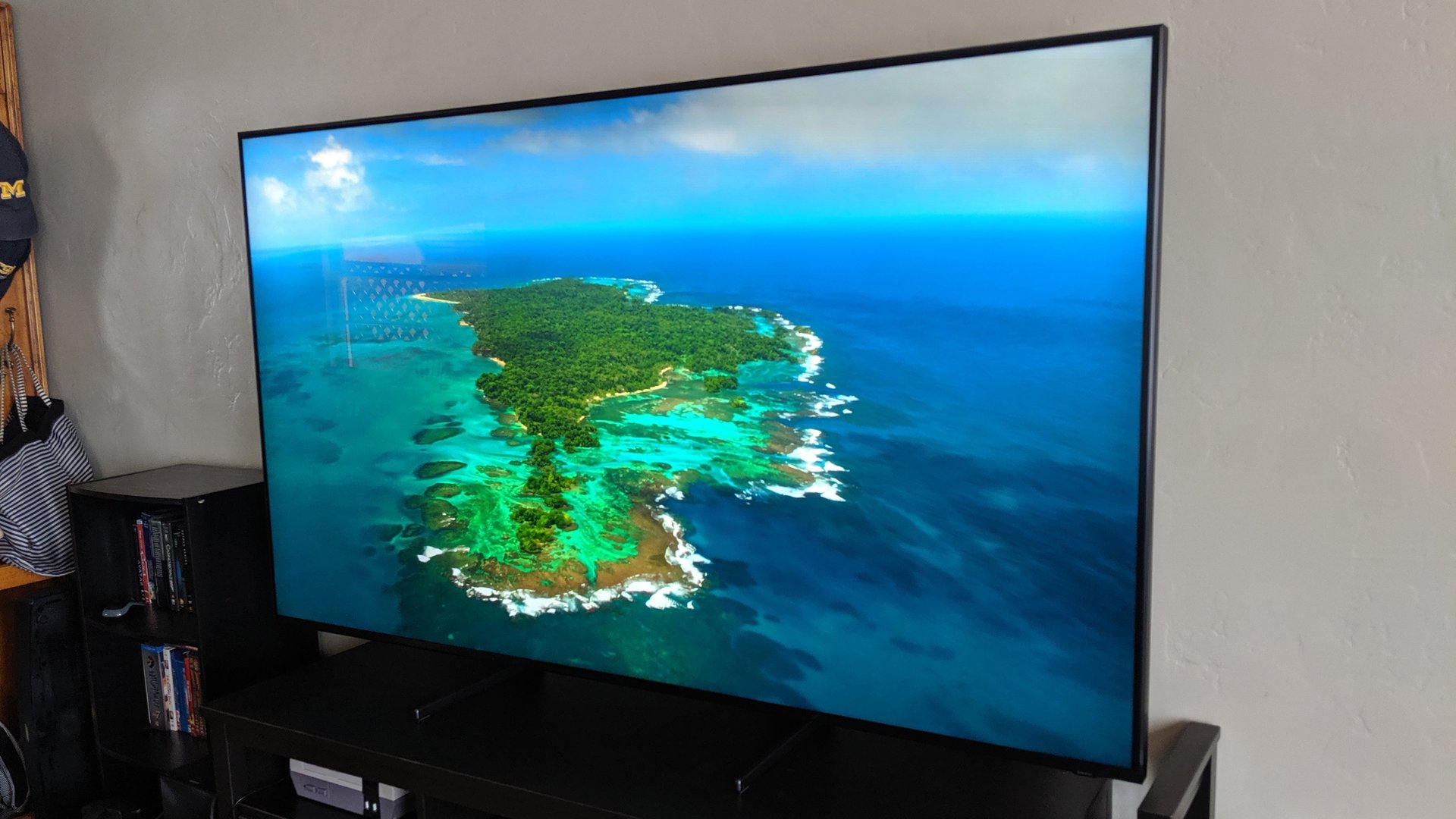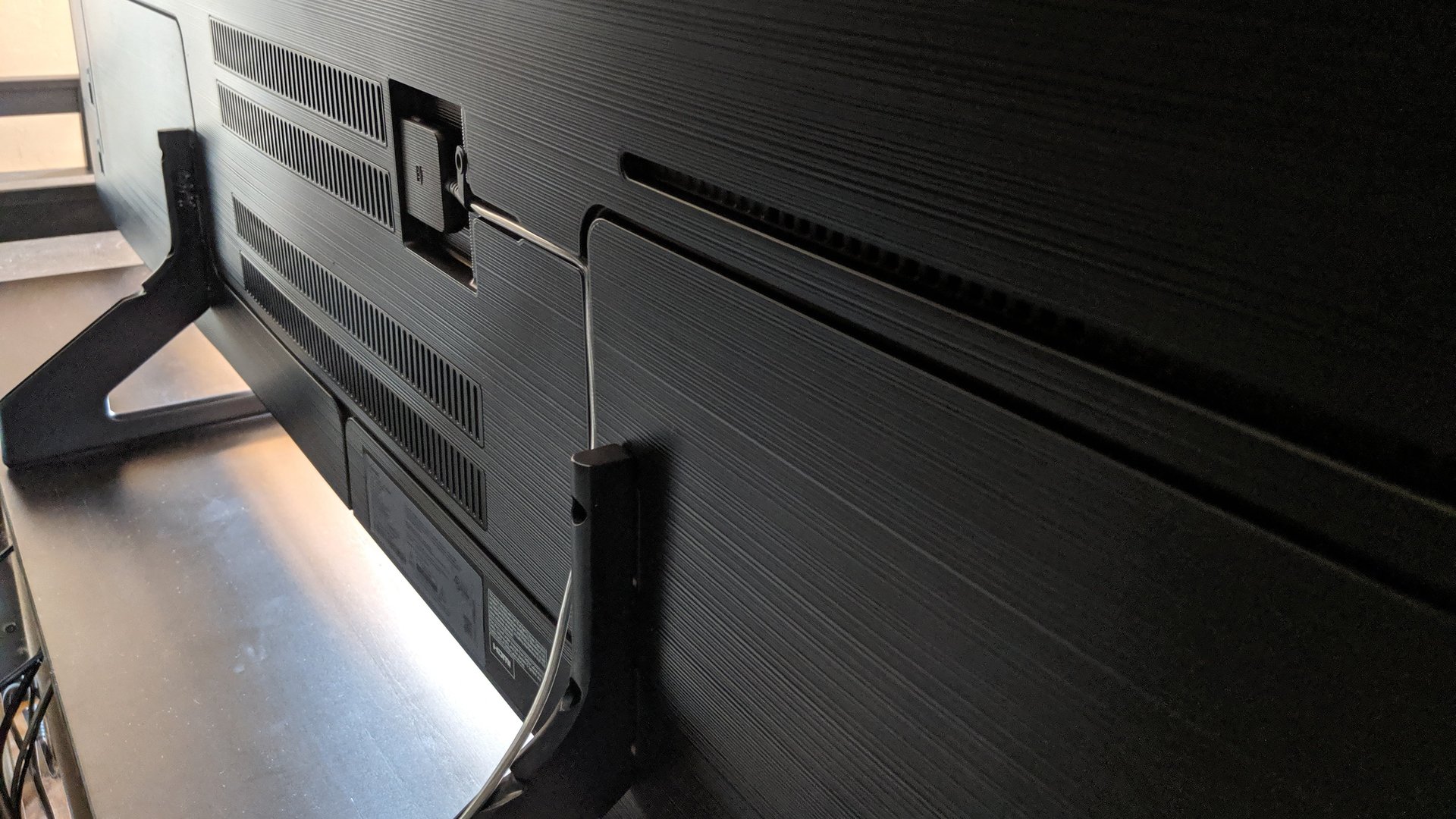Samsung’s First 8K Consumer TV Is Impressive—But Not Because of Its Resolution
I bought my first 4K TV last year, and many of my family and friends still haven’t made the jump. But despite 4K’s infancy, Samsung has already released the first consumer-ready 8K display, known as the Q900. Samsung lent us a 75” model to review, and it’s an incredibly impressive, innovative TV...but not for the reasons you might think.

I bought my first 4K TV last year, and many of my family and friends still haven’t made the jump. But despite 4K’s infancy, Samsung has already released the first consumer-ready 8K display, known as the Q900. Samsung lent us a 75” model to review, and it’s an incredibly impressive, innovative TV...but not for the reasons you might think.
Suggested Reading
If you’re familiar with Samsung’s QLED TVs, you probably have a good idea of where they excel. The quantum dot enhancement layer allows for fantastic color reproduction, both in terms of an extremely wide color gamut and incredible color volume. Watching the first episode of Planet Earth II on this TV was friggin’ jaw-dropping in its vibrancy, and while the colors aren’t quite at the level of last year’s QLEDs, they’re still phenomenal. It also has an extremely high peak brightness, which translates to stunning HDR scenes—like the opening scene in Inception when the camera pans through Saito’s dining room, illuminated by dozens of lights across the ceiling. OLEDs may still be the panel to beat in a lot of ways, but even with their increased contrast ratio, scenes like this don’t “pop” quite as much as they do on an extremely bright LCD like the Q900. (Unfortunately, Samsung’s TVs don’t support Dolby Vision, but the Q900 does support the newer HDR10+, which isn’t as widely supported yet but is a more open standard.)
Related Content
Speaking of contrast ratio, that’s one area where this panel falls short. Unlike its predecessors, some of which had shockingly deep blacks for non-OLED panels, the Q900’s native contrast ratio is rather low, so blacks look like light grey—especially in daytime light. Local dimming makes this less of an issue in a dark room, though, so watching movies at nighttime didn’t feel like I was making huge compromises.
The lower color volume and contrast ratio may make the Q900 sound like a step down from previous QLEDs, but there’s one notable change that is a huge leap forward: the viewing angles. On this year’s models, Samsung has added what they call an “Ultra Viewing Angle” layer to the panel, which hugely improves the off-axis picture quality compared to other LCD TVs—at the expense of that lowered contrast ratio. That means if you have other people sitting off-center in your living room, they’ll be able to see the TV without colors shifting, which is a common issue with LCDs (especially ones this large). It’s similar to what Sony did for their Z9F’s “X-Wide Angle” layer, and it’s pretty amazing—though it does feel a little like one step forward and one step back, so it’s up to you whether you care more about deep blacks or wide viewing angles

The Q900 also has better reflection handling, so your TV doesn’t turn into a mirror in a well-lit room. It doesn’t eliminate reflections as much as it spreads the light around the screen—which can make those blacks look even lighter grey in a bright room—but it’s definitely better than having a big white splotch rendering the image useless, and coupled with the high level of brightness the QLEDs provide, it makes for a great TV in a sunny living room.
Finally, like Samsung’s older QLED TVs, the Q900 is a fantastic TV for gaming, thanks to its low input lag and inclusion of FreeSync, which eliminates screen tearing on the Xbox One and gaming PCs hooked up to the TV. This year’s QLEDs can also recognize your gaming console and switch to Game Mode automatically, which is a killer feature if I’ve ever seen one. And while OLEDs have comparably low input lag and response times, QLEDs aren’t susceptible to burn-in caused by static on-screen health meters and mini-maps.
But Do I Really Need an 8K TV?
Okay, now that we’ve gotten that out of the way, let’s talk about the 8,000 pixel gorilla in the room. 4K has only recently made it to the mainstream, and apart from a few demo reels, there is almost no native 8K content. Heck, even many of the 4K Blu-rays out there are merely upscaled from a 2K master...so why would anyone want an 8K TV when there’s nothing to watch on it?
That’s...a hard question to answer. Sure, all other things kept equal, even 4K content upscaled to 8K is going to look better than the original 4K video, thanks to Samsung’s AI-powered upscaling. There’s also an argument that higher resolution looks more realistic to most people, even if you’re well past the point of distinguishing individual pixels. And we already know the PlayStation 5 is going to support 8K graphics, though likely “cheating” with its own upscaling tricks.
I’m not sure I can make these arguments coalesce into a firm yes or no, but I can pretty confidently say that the 8K Q900 is going to be a negligible step up from the Samsung’s 4K Q90—and considering the Q900 costs $4,500 for the 65” size (compared to $3,000 for the Q90), you’re pretty firmly in the realm of diminishing returns.
None of that’s to say the Q900 isn’t a great TV—it still blew me away in most respects. But I can’t say I’d recommend buying it yet unless you 1) have a ton of disposable income, 2) want to future-proof your home theater as much as possible, and 3) need a new TV now and don’t want to upgrade in another few years when 8K sets drop in price. If that sounds like you, go for it—you certainly won’t be disappointed.

If those don’t apply to you, though, that’s okay: Samsung’s Q90 comes with almost all the same benefits—fantastic color reproduction, wide viewing angles, superb reflection handling, and the still-awesome OneConnect box, which eliminates cable clutter behind the TV. Or, you can save even more money going down the line to the Q60, which eschews the wide viewing angle and full-array local dimming. Last year’s QLED sets have also come down in price, if you really want a top-tier TV at relatively affordable prices.
All that assumes the QLED TVs are right for you in the first place, of course. If your TV is going in a dark room, I’m still tempted to recommend an OLED from LG instead (this year’s models are great, but last year’s models are almost equally good if you want to save some money). Or, if you’re looking for something under $1000, then you’re reading the wrong article, and you’ll want to look at something from TCL or Vizio. Sony has the biggest competitor to Samsung’s cheaper QLEDs in its X900F, and at the ~$1000 mark, it may be a better buy than Samsung’s Q60, particularly for its superior local dimming in a dark room.
So no, I don’t recommend most of you buy an 8K TV this year, but that’s okay: while the Q900 is only accessible to an elite few, the tech has to come to market sometime. No one’s going to make 8K content until 8K TVs are more common and affordable, so as with every new format, we have to play this chicken-and-egg game for a while—and for now, the Q900 is an exciting peek into what the rest of us are going to see in a couple year’s time.
I won’t be buying an 8K TV either, but spending this time with the Q900 reminded me why I was tempted by Samsung’s QLEDs in the first place. My OLED will be staying in my office for critical viewing, but our well-lit living room needs a new TV, and Samsung’s beautiful color and brightness has me awfully tempted.
